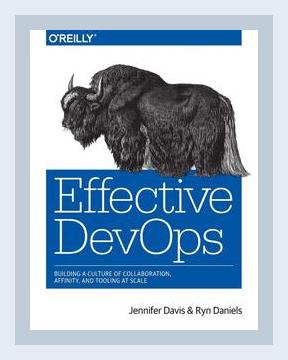Technology and Digital TransformationIT Management
Title: Effective DevOps: Building a Culture of Collaboration, Affinity, and Tooling at Scale
Authors: Jennifer Davis, Katherine Daniels
Year: 2016
Category: IT Management
Introduction
“Effective DevOps: Building a Culture of Collaboration, Affinity, and Tooling at Scale” by Jennifer Davis and Katherine Daniels is a comprehensive guide on implementing DevOps practices in an organization to foster a collaborative culture geared towards effective and efficient software development and IT operations. The book emphasizes the importance of people, process, and tools in achieving successful DevOps integration.
Chapter 1: The DevOps Journey
Main Point
DevOps is more than just the implementation of new tools; it’s a cultural shift that requires the involvement and collaboration of all stakeholders in the development and operations lifecycle.
Specific Action
- Action: Initiate DevOps kick-off meetings with both development and operations teams to discuss goals, roles, and how each team will contribute to the overall DevOps practices.
Example
The authors describe an organization where bi-weekly all-hands meetings were held with developers, operations, and other stakeholders to align on expectations and objectives. This broke down silos and fostered trust between teams.
Chapter 2: Collaboration
Main Point
Effective communication and collaboration are the foundation of a successful DevOps culture, necessitating transparent workflows and open channels of communication.
Specific Action
- Action: Set up cross-functional teams with shared goals and encourage the use of collaborative tools like Slack, JIRA, and Confluence for ongoing communication and project tracking.
Example
At Etsy, the introduction of chat rooms and virtual standups facilitated real-time communication, enabling rapid feedback loops and reducing time to resolve issues.
Chapter 3: Affinity
Main Point
Building affinity involves fostering a sense of shared responsibility and mutual respect among team members, regardless of their specific roles in the software delivery pipeline.
Specific Action
- Action: Organize team-building exercises and social events to build trust and camaraderie among team members. Encourage job shadowing and cross-training to deepen understanding across roles.
Example
A case study in the book described how a company used job rotations to let developers experience on-call duties. This not only built empathy but also improved the quality of the on-call solutions.
Chapter 4: Tools
Main Point
Tools are crucial for automating and optimizing workflows, but should be chosen and implemented in support of the broader cultural goals of DevOps.
Specific Action
- Action: Conduct thorough evaluations of tools with the entire team to ensure they meet the collective needs of both Dev and Ops. Implement CI/CD pipelines using tools like Jenkins, Git, and Docker.
Example
The book details how Netflix leverages Spinnaker (a multi-cloud continuous delivery platform) to automate its release process while ensuring reliability and reducing human error.
Chapter 5: Scaling DevOps
Main Point
Scaling DevOps practices effectively requires a balance of standardization and flexibility to adapt processes to different team sizes and organizational structures.
Specific Action
- Action: Implement a modular approach, beginning with pilot teams to iterate and adapt practices, before deploying them organization-wide.
Example
The authors cited Spotify’s squad model, which allowed independent teams to operate autonomously while adhering to a shared development framework, fostering innovation without compromising on consistency and efficiency.
Chapter 6: Measuring Success
Main Point
It’s essential to measure the outcomes of DevOps initiatives through metrics that reflect both technical performance and team health.
Specific Action
- Action: Establish metrics such as deployment frequency, lead time for changes, mean time to recovery (MTTR), and the level of team satisfaction via periodic surveys.
Example
Using the example of Target, the book illustrates how they employed metrics dashboards to regularly track performance and make data-driven decisions, leading to significant improvements in deployment speed and reliability.
Chapter 7: Continuous Evolution
Main Point
DevOps is an ongoing journey, and continuous learning and improvement should be embedded in the culture.
Specific Action
- Action: Adopt a continuous improvement framework such as Kanban, and regularly host retrospectives and post-mortems to identify lessons learned and areas for improvement.
Example
Google’s SRE (Site Reliability Engineering) approach is highlighted, which emphasizes blameless post-mortems and constant refinement of processes to reduce incident occurrence and improve overall systems reliability.
Conclusion
“Effective DevOps: Building a Culture of Collaboration, Affinity, and Tooling at Scale” offers a pragmatic approach to integrating DevOps into an organization. It underscores the importance of culture, collaboration, empathy, and the judicious use of tools to create a harmonious and productive environment. Taking concrete actions such as promoting open communication, fostering mutual respect, and continuously evaluating and iterating on practices can lead to significant improvements in both team dynamics and technical delivery capabilities.
Overall Action Plan
- Initiate DevOps Kick-off: Convene initial meetings and establish a common understanding and goals.
- Foster Collaboration: Implement collaborative tools and set up cross-functional teams.
- Build Affinity: Organize team-building activities and promote cross-training.
- Select and Evaluate Tools: Carefully choose tools that align with the organization’s goals and implement CI/CD pipelines.
- Pilot and Scale: Start with pilot teams, iterate, and then scale practices across the organization.
- Measure and Adjust: Regularly monitor performance metrics and team health, and adjust practices as needed.
- Continuous Improvement: Embed continuous learning and improvement into the culture through retrospectives and post-mortems.
By following these structured steps, an organization can effectively integrate DevOps practices, thus paving the way for a more collaborative, efficient, and resilient development and operations environment.
